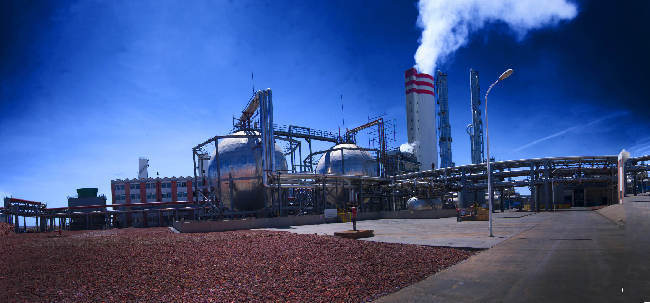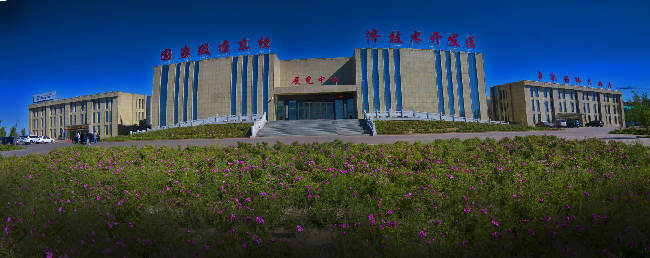National Xinjiang Zhundong
Economic and Technological Development Zone
By HU XIAODONG & PAN ZHONGMING
THE Zhundong Development Zone in Changji Hui Autonomous Prefecture, northern Xinjiang Uygur Autonomous Region, is emerging as the new growth engine of local economy. Located adjacent to the namesake coal field, the zone encompasses six coal-based industries – coal-fired power, coal-power-metallurgy integration, coal chemicals, coal-derived natural gas, coal liquefaction, and new-type building materials. A key supplier of gas and electricity to China’s eastern provinces, its high-efficiency, clean production techniques yield products of high added value.
The aim of the development zone is to become a world-level coal-fired power and coal chemical industrial base. It will spearhead reformed exploration techniques of China’s strategic energy sources and its experiments to promote green growth in regions with natural-resource-dependent economies.
Nearby Zhundong Coal Field is China’s largest integrated coal field and 14th largest coal production base. With a lode that covers a total 13,000 square kilometers, the coal field has proven reserves of 213.6 billion tons and an estimated 390 billion tons of deposits that are good for power, chemicals and coal liquefaction.
|
 |
| The low-carbon "circular economy" industrial park built by Hubei Yihua Group, a petrochemical conglomerate. |
The coal field’s economic potential has drawn a legion of businesses. By the end of 2012, 56 enterprises had invested a total RMB 77.94 billion in setting up operations in the area and accompanying infrastructure on 46 projects, so creating 20,000 jobs. The zone’s industrial output last year stood at RMB 7.34 billion with industrial added value of RMB 2.26 billion. It also produced 31.37 million tons of crude coal, 5.88 million tons of carbamide and 136,000 tons of aluminum ingots. Investment of RMB 40.7 billion is scheduled for this year. Industrial output is expected to hit RMB 17.6 billion, with an industrial added value of RMB 4.1 billion.
Preparatory work in the year 2013 kicked off on 77 industrial projects in the zone, whose total investment is projected at over RMB 800 billion. Construction continues with 21 projects and there are plans for five more to start within the year. By the end of this year, RMB 36.2 billion of investment will have been completed.
Zhundong aims by 2015 to produce and process 118 million tons of coal every year; the installed capacity of coal-fired power generators is expected to reach 22 million KW. Its projected annual output goals include 4.8 million tons of metallurgy, 1.2 million tons of olefin, 1.2 million tons of carbamide, 600,000 tons of PVC and 12 billion cubic meters of coal-derived natural gas.
Complete highway, power and water supply and telecommunications networks have taken shape in the area, and railway lines are under construction. A 750 KV power transmission and transformer station has started operation, a 220 KV power transmission and transformer network largely completed, and a ±1,100 KV high-voltage direct-current power transmission line extending from Zhundong to the inland has broken ground. A reservoir with a storage capacity of 50 million cubic meters supplies local plants and homes with up to 100 million cubic meters of water annually. Other public facilities and services, such as police, health care, banking, TV and radio, are all in place, and supportive industries like logistics and catering will soon follow. All this lays solid foundations for the region’s further industrial development.
 |
| Zhundong's goal is to become a world leader in coal and coal chemicals. |
To accommodate the influx of workers that are manning industrial projects in the region, Zhundong is also improving nearby public facilities, services and amenities indispensable to modern life. It is steering its economy in an environment friendly direction.
Conscious of the need for social harmony and environmental well-being amid efforts towards economic development, Zhundong Economic and Technological Development Zone sets an example of sound and fast growth as well as new-model industrialization, both in Changji Prefecture and Xinjiang at large.

